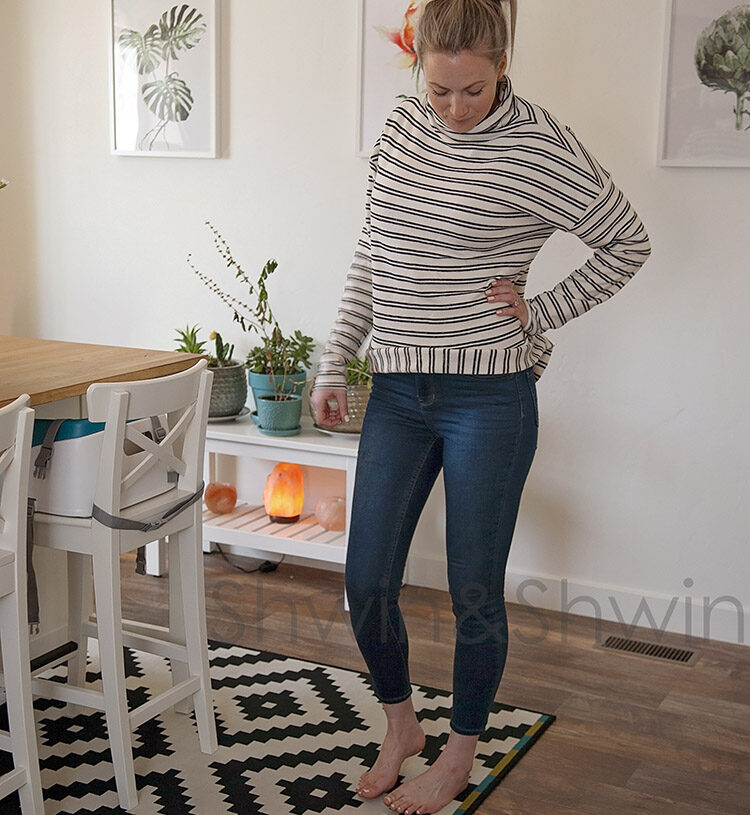
Have you seen the new Swiss Top Pattern in the shop? While the pattern has a cute and flattering split hem, sometimes when I am sewing knits I like to be lazy and skip all hemming by just sewing on a hem band.

It also adds a different look and can taper in the hem a bit which is nice. So how do you add a hem band? You can add one to ANY knit pattern, with a few simple steps. Also it should be noted, since the Swiss has a higher front hem and lower back hem (with the split) I emphasized that detail and split the difference so this top had a high low curved hem before sewing on the band. You could also do this straight across and just cut off the side vent of the pattern piece.

How to sew a knit waistband
- Measure the bottom hem (front and back) Then multiply that measurement by .85 (this is assuming at least 50% stretch or you may want to up that to .90) So say the hem is 41″ the band should be 34.85″ wide and I like to make them about 5″ tall.
- Fold the waistband in half width wise so right sides are together. Sew the short ends together.
- Then fold the band height wise so the wrong sides are together, and the seam is to the inside.
Then to sew the band on to the bodice I use the seam as the center back, and find the half and quarter points as well on the band. (half being the center front and the quarter points are half way between the front and back) Then find the center front and back of the bodice as well. The quarter points are the side seams typically. With right sides together, and the raw edges of the band towards the raw edge of the hem, match up the center front, back and quarter points all together. Stretch the band between each point as you sew the band to the hem.

It’s that easy, now you can sew a band to any knit top. I often use the same fabric as the top, but if it doesn’t have enough stretch or recovery you could always use a coordinating knit or rib knit. Rib knits were designed for use on cuffs and bands for that very reason. They stretch and recover very well.

I love the slight high low hemline by just curving between the front and back pattern pieces. The Swiss Top made a perfect sweatshirt.
